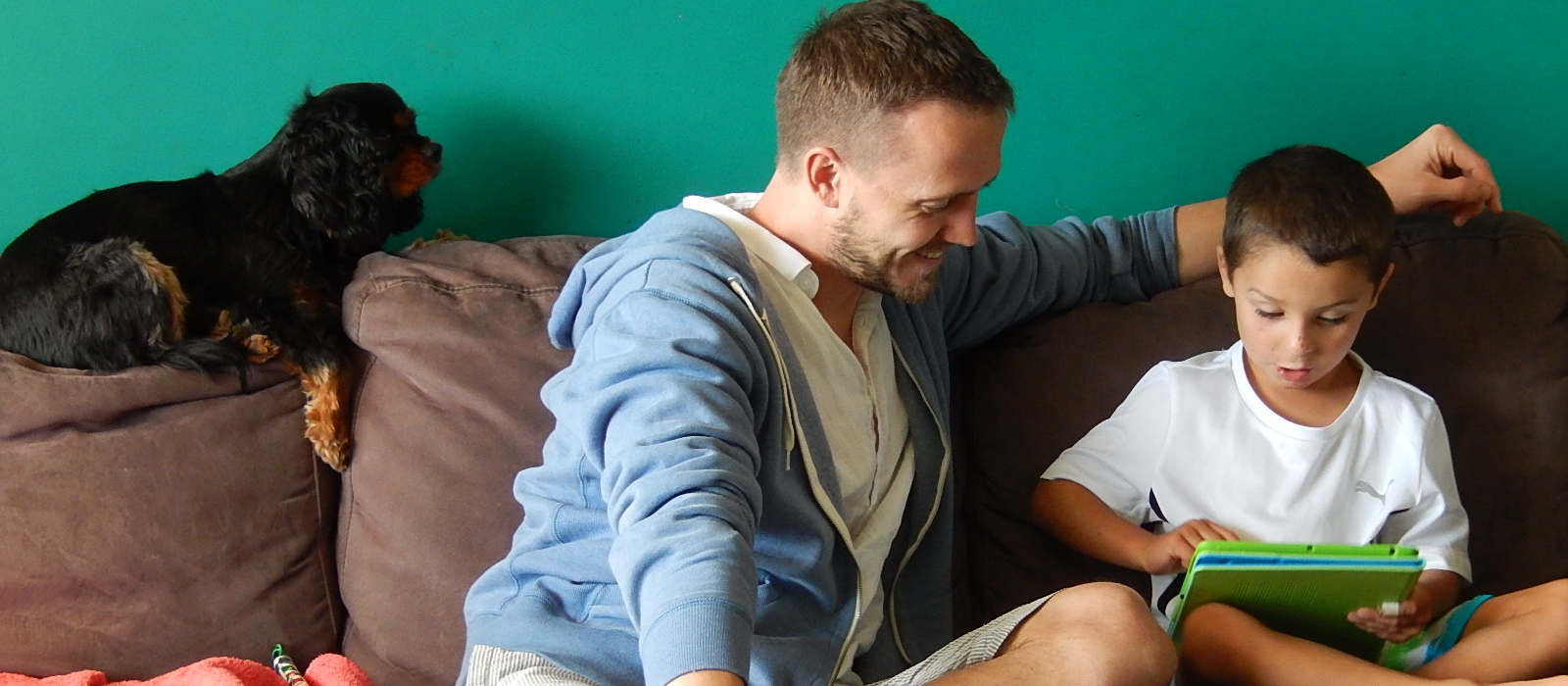 In this post, Jenny Simpson shares her research into how foster carers manage young people’s use of digital devices. The study involved young people in care aged 14-18 in England, as well as their foster carers and social workers, and considered how they used such devices to contact family members. It found that monitoring of young people’s use of such devices was a continuous part of the foster carers’ role but they often lacked adequate skills, training and support. [Header image credit: Fixers, CC BY-ND 2.0]
In this post, Jenny Simpson shares her research into how foster carers manage young people’s use of digital devices. The study involved young people in care aged 14-18 in England, as well as their foster carers and social workers, and considered how they used such devices to contact family members. It found that monitoring of young people’s use of such devices was a continuous part of the foster carers’ role but they often lacked adequate skills, training and support. [Header image credit: Fixers, CC BY-ND 2.0]
When a child enters the care system in England there is a responsibility by local authorities to ensure that they are placed in suitable care arrangements. This can happen through a variety of means that includes: being fostered; being placed with relatives and friends or in a children’s home; semi-independent living or in a secure unit. The majority of children are placed with foster carers. An important legal duty that local authorities have in relation to children in care is to “endeavour to promote contact between a child in care and his/her parents or others, unless it is not practicable to do so or not consistent with the child’s welfare”. Consequently, local authorities need to plan and arrange contact between the child in care, their birth parents and possibly other members of the family via a social work assessment. This management and organisation of contact is now radically changing with the use of mobile devices and the internet by children and young people who are in care.
Challenges and concerns over technology use
There has been extensive research over a number of years in relation to contact and more recently that research has included the use of mobile communication devices and the Internet. Unsurprisingly, foster carers have expressed concerns about the use of this technology for contact. This is evidenced in the report entitled “Online Safety Foster Carer Survey of 2016” by the Guardian Saints. The findings revealed that 58% of foster carers were caring for children and young people between the ages of 11 and 17. Foster carers highlighted the challenges in relation to devices, such as mobile phones purchased by birth parents and the use of free Wi-Fi hotspots. Foster carers also said that they were unable to apply controls to the devices in the same way that they could with computers and their own personal Wi-Fi. Furthermore, 21% of the foster carers had experienced incidents of cyberbullying and unregulated contact between the child or young person in their care and birth family members. Another finding is the age of foster carers and their confidence with technology. Some foster carers responded by stating that blocking content was far too complicated for them and that the children in their care had a better understanding. A supposition is made that this finding may be due to the age demographic of foster carers, with 50% of respondents being over the age of 50 and a 17% over the age of 60.
A similar report was completed by The Children’s Commissioner’s report (2017), as part of the Fostering National Stocktake. The small-scale study involved children and young people in care from three residential homes and a secure unit, as well as a group of children in foster care. In fostering placements, the report identified that access to the internet was dependent upon the foster carers’ own digital skills. The report noted that the foster carers’ lack of digital skills led to an alarmist and overly cautious approach. Within the Commissioner’s report, there was an admission that foster carers had no real knowledge as to what digital access looked like. Common between both reports was the lack of support by social workers.
Research by Queens University Belfast differs from what has been outlined thus far in that they found that 45% of the foster carers surveyed said that they did not think that the use of a mobile phone had a detrimental effect on the placement. This was confirmed in the conclusion that:
“Overall, the general perception was positive, strengthened by the pragmatic view that mobile phones are a way of life for all children, not just children in care.”
The study’s key findings
The aim of the research reported here was to find out if young people in care made use of mobile communication devices for contact and the response by their foster carers and social workers [1]. A total of 35 interviews were completed [2]. A key finding was the frequency and nature of monitoring by some foster carers was such that it constituted a routinised aspect of foster care that began first thing in the morning and stopped last thing at night. This type of monitoring was taken for granted and was seemingly accepted as an extension of their role, as they were expected to report back to the young person in care’s social worker any concerns that they had.
The majority of foster carers made use of a range of monitoring methods that included both physical activities and tasks. For example, hovering and watching, and also a technological approach, of making use of monitoring software. These were often in response to what they considered to be a range of risks such as inappropriate content and contact by strangers. However, this focus linked to risks associated with general use of mobile communication devices by young people in care, and not threats posed by birth parents.
Another finding was the way monitoring and surveillance of young people in care differed according to age. The ability of foster carers to monitor older adolescents was clearly limited for a number of reasons that included independence and autonomy. Against a backdrop of continued and ongoing monitoring and surveillance, it was noted that the young people in care engaged in small acts of resistance. This involved them avoiding efforts by their foster carers to monitor their use of mobile communication devices and the Internet, for example turning off their phone.
Improving training, support and communication
Taking into account these findings and previous research there are a number of responses that are required. Firstly, to develop the confidence, skill and a balanced response by foster carers to risk by making available specific training that enables them to have an understanding of what digital access looks like. Secondly, increased support from social workers. Thirdly, a tool or mechanism to help foster carers to develop a dialogue with young people in care about their use of mobile communication devices and how this might best be negotiated within the fostering household.
Notes
[1] All those who took part completed a semi-structured interview.
[2] Two young people in care had the same social worker.
This article represents the views of the author, and not the position of the Parenting for a Digital Future blog, nor of the London School of Economics and Political Science.





